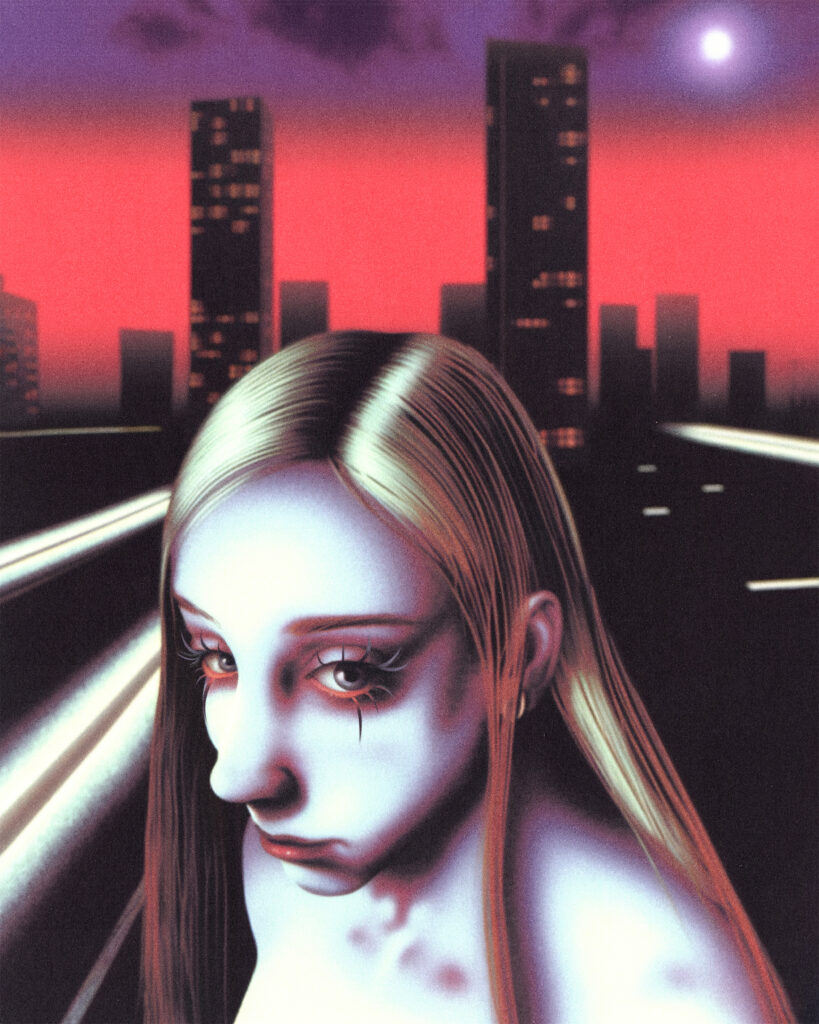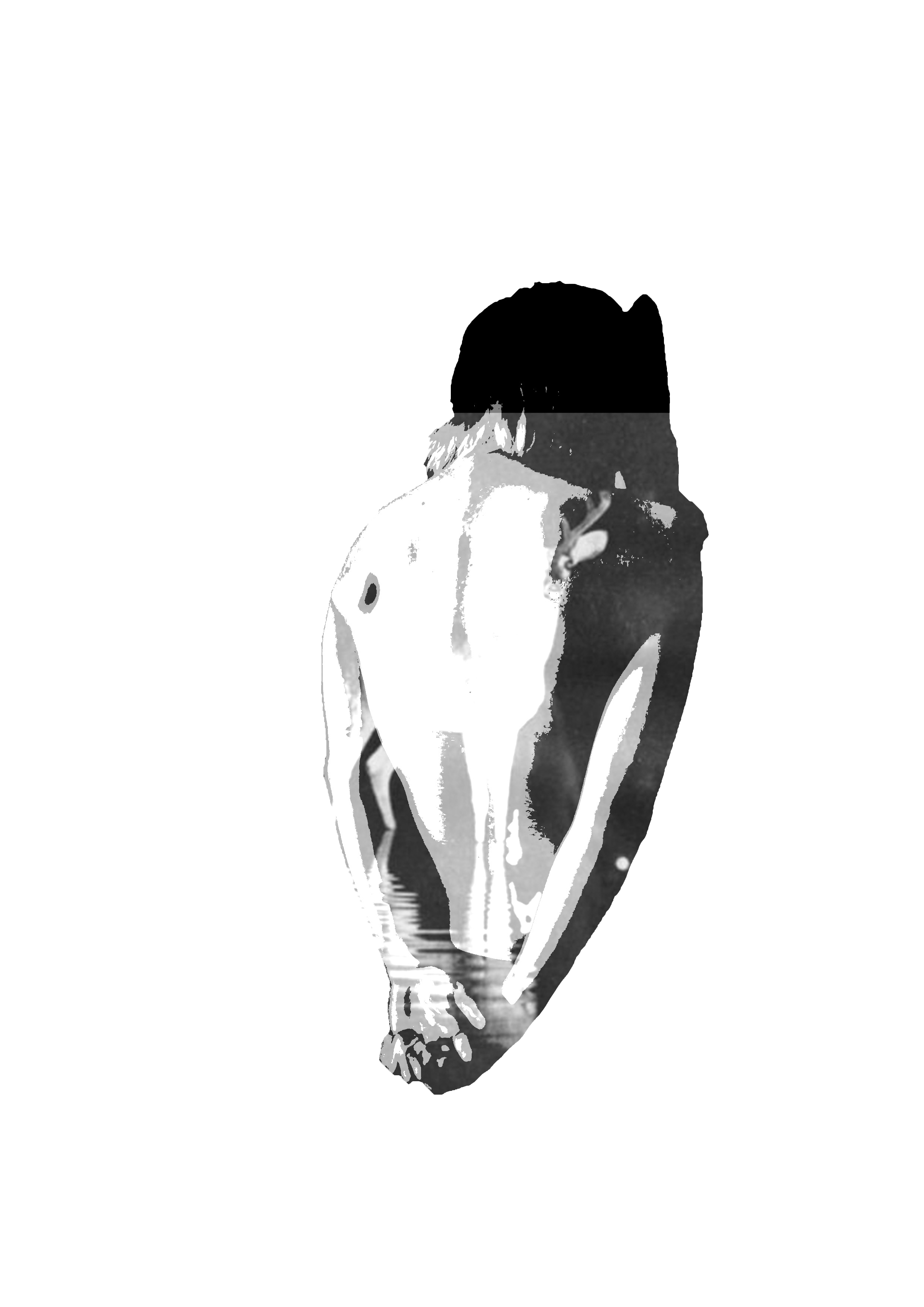SATHYAN RIZZO
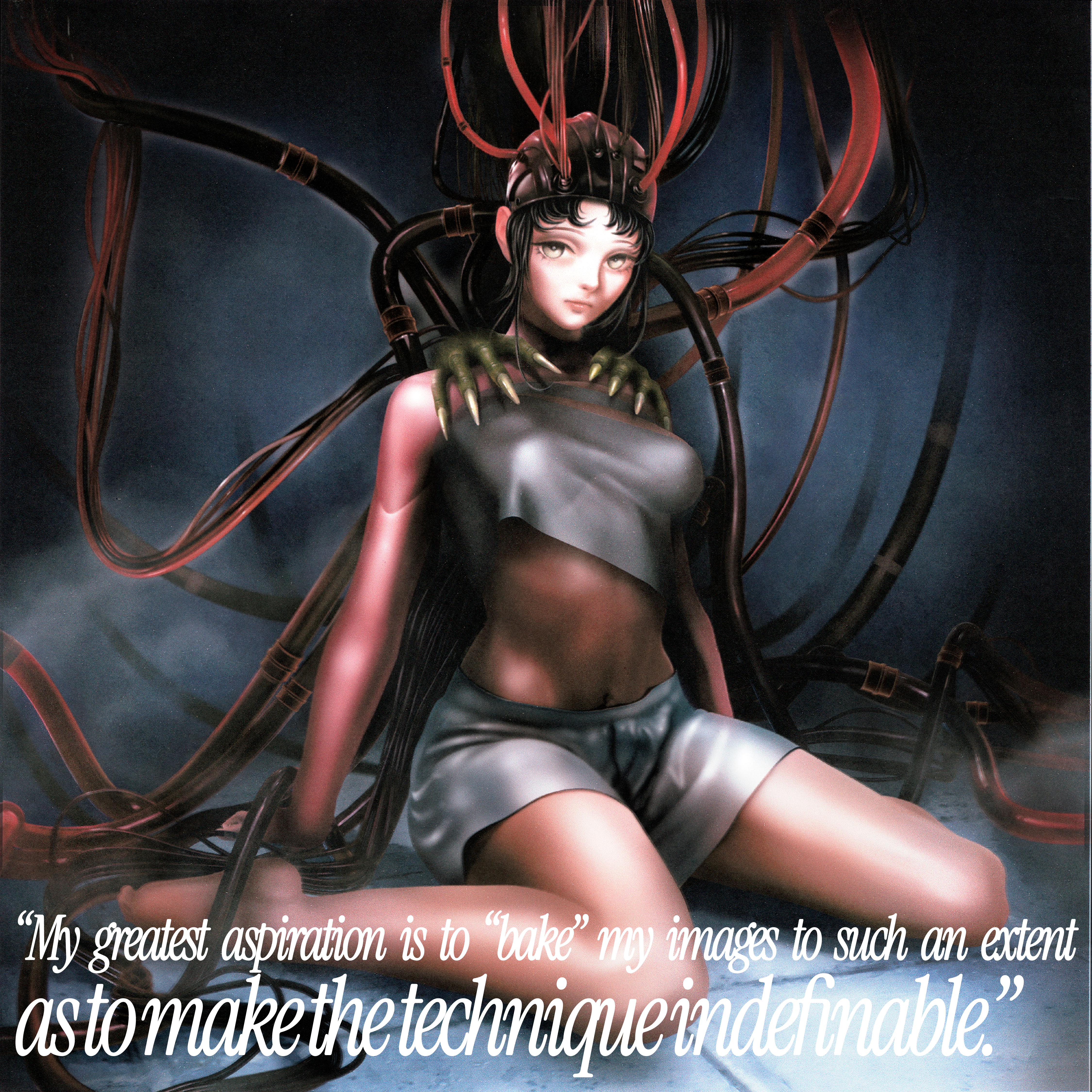
My greatest aspiration is to “bake” images to such an extent as to make the technique with which I work indefinable, blending pixels to create a final ‘impasto’ that’s solid, unified, and delicate, much like my approach to oil painting. The oil painting process, particularly the Renaissance technique of layering thin veils to reveal forms, continues to fascinate me and, in some ways, informs my practice to this day.
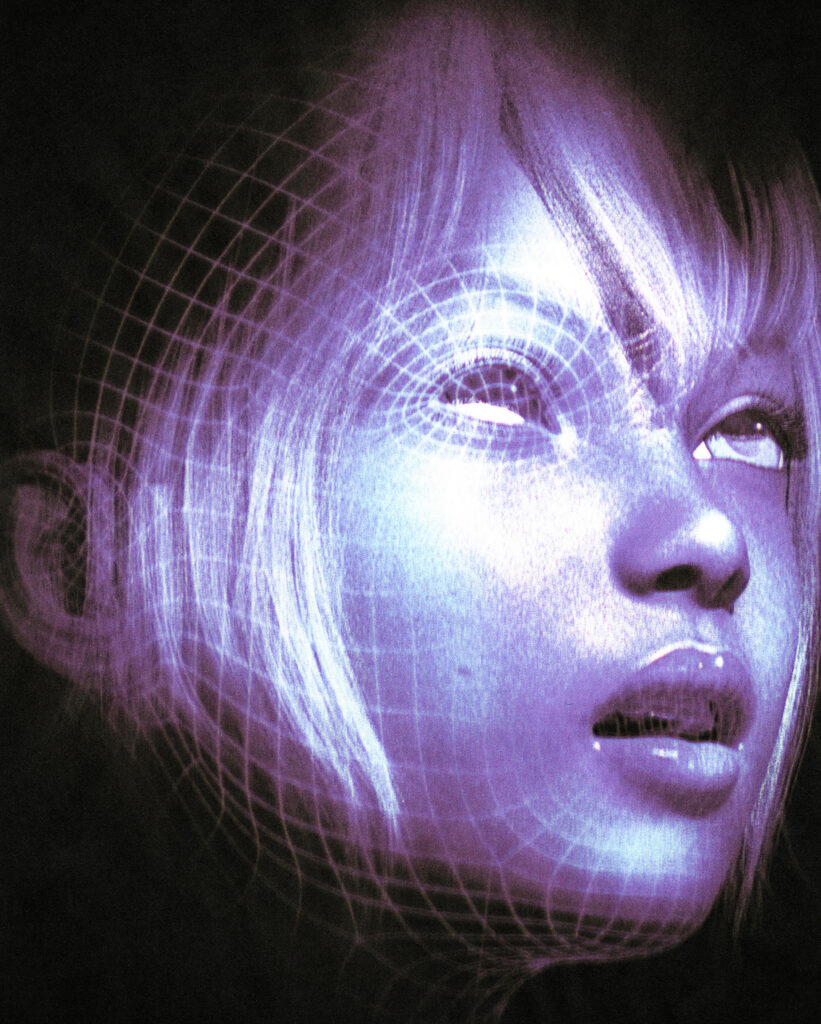
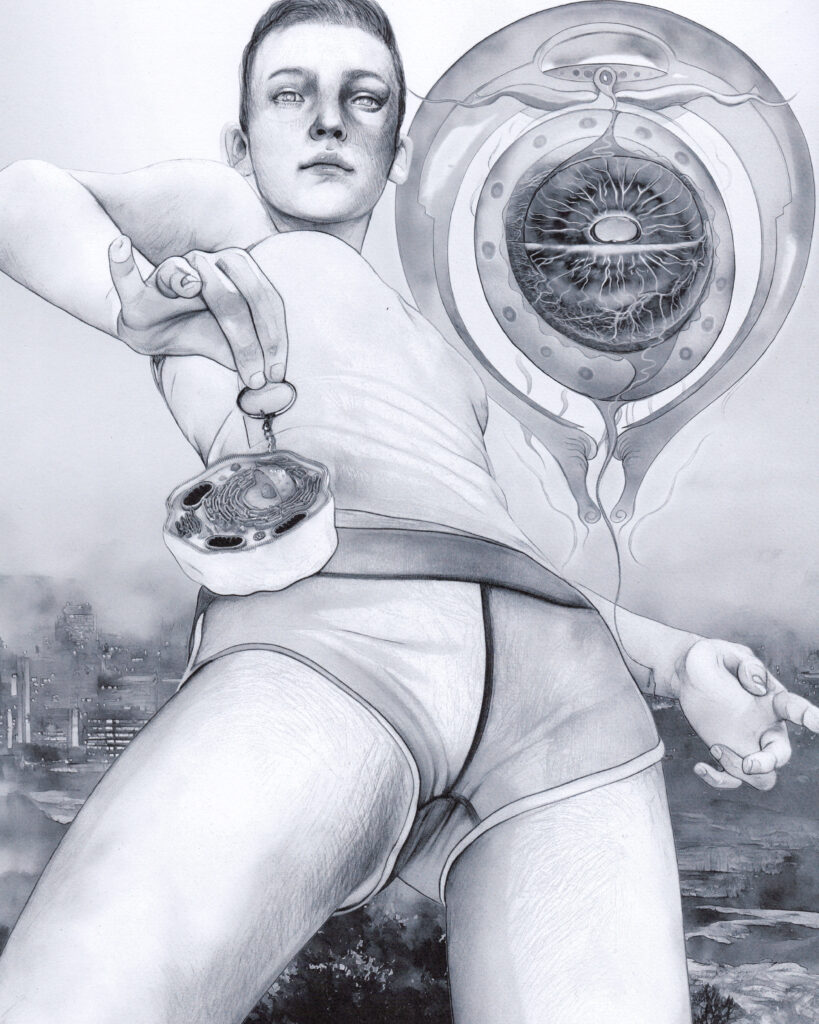
Vanessa Ruiz: You started with oil painting to get to contemporary techniques such as 3D graphics, two techniques that seem very distant from each other. How has painting contributed to the creation of a style as recognizable as yours?
Sathyan Rizzo: During my journey from art high school through my bachelor’s in fine arts, I studied oil painting as a part of the conventional curriculum. My introduction to computers came later, while advanced in my academy studies. Facing a financial crisis, I had to set aside traditional painting techniques. The need for income drove me to self-learn through courses and tutorials, propelling me into freelance graphic design. The ease and immediacy of working with a laptop (undeniably less frustrating) made me give up analog tools.
My experimentation with digital media led me to emerging collectives of the time, introducing me to new concepts and stimuli. I was drawn in, starting dialogues with numerous artists, many of whom have become both friends and colleagues with whom I continue to collaborate. After 10 years of painting, I retained approaches that I have been able to translate into my workflow. For instance, when I painted, I was obsessed with making brush strokes invisible, and in a sense, I still am. My greatest aspiration is to “bake” images to such an extent as to make the technique with which I work indefinable, blending pixels to create a final ‘impasto’ that’s solid, unified, and delicate, much like my approach to oil painting.
The oil painting process, particularly the Renaissance technique of layering thin veils to reveal forms, continues to fascinate me and, in some ways, informs my practice to this day.
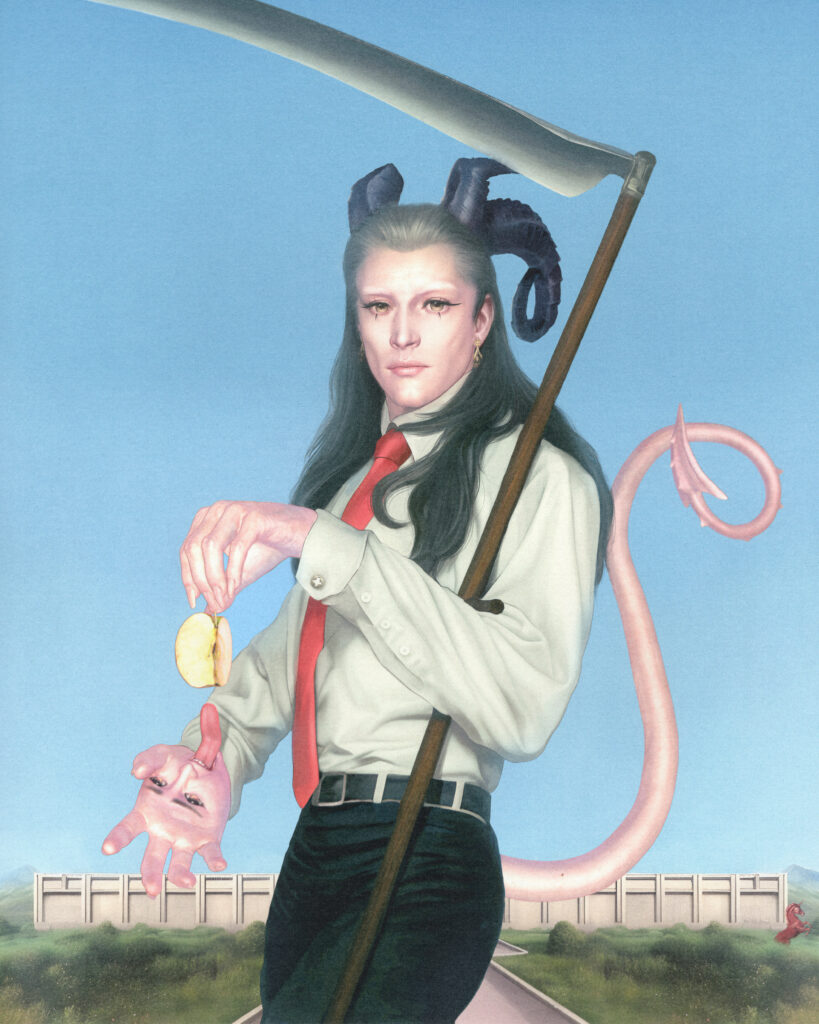
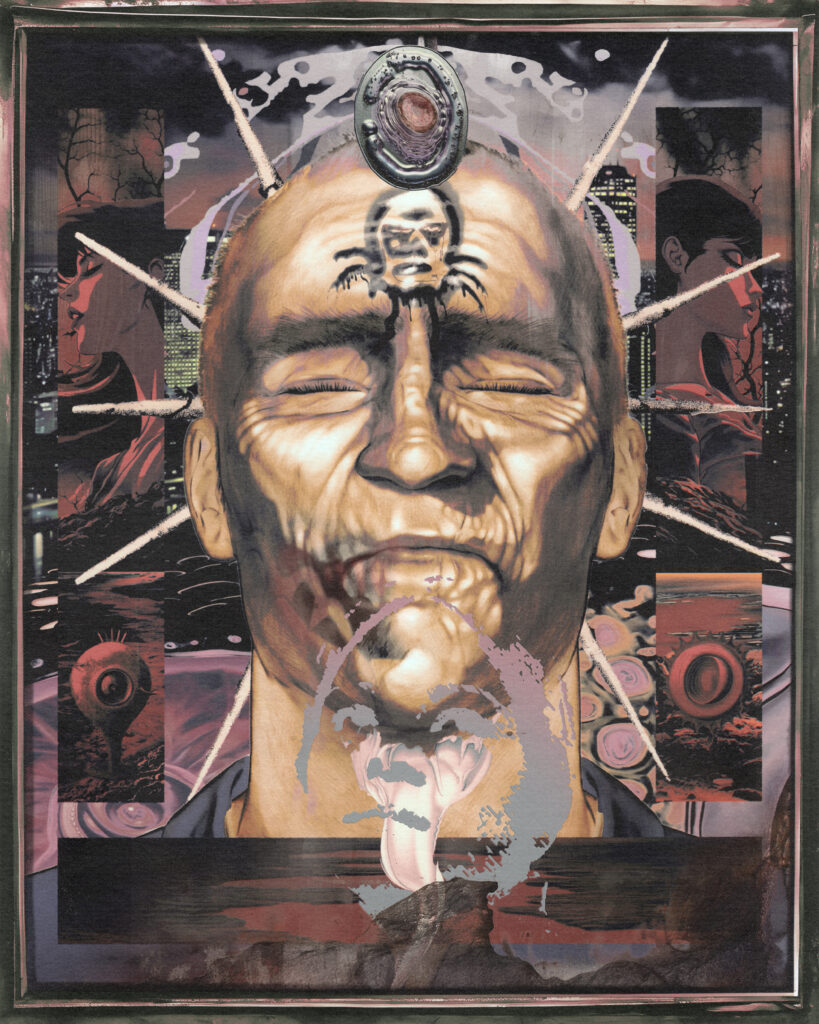
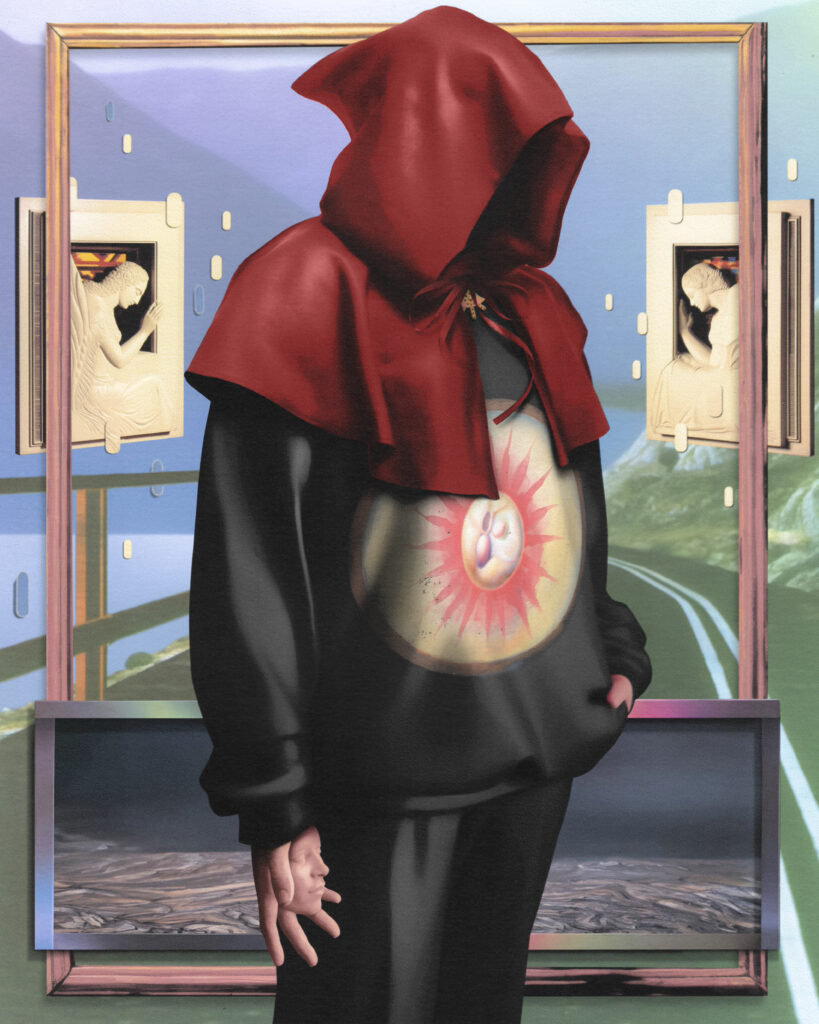
VR: Deep contaminations from different worlds are perceived in your images. What were your sources, digital and not, for inspiration? And why porn magazines?
SR: “Internet Archive” undoubtedly stands out as one of my go-to resources for inspiration. Browsing through the catalogs of vintage magazines is a particular joy of mine because, in years gone by, illustration served an advertising purpose that it has largely lost in the modern day. Exploring archives of publications like PC Tech Journal, MSX Magazine, and S&M Sniper often reveals striking artworks by authors who have largely flown
under the radar. I also have a keen appreciation for speculative sci-fi illustration; Wayne Barlowe’s ‘Expedition’, for example, ranks among my favorites.
I’ve nurtured a profound interest in Japanese manga and video game authors as well, ranging from the concept art of FromSoftware’s various ‘Souls’ titles to the megalophobic architectures depicted by Tsutomu Nihei in ‘Blame!’.
Go Nagai has perhaps made one of the most significant creative impacts on me, especially his artbooks like ‘The Devilman’ from 1990 – a style characterized by the melding of traditional manga styles, airbrushed in a grotesque, almost decadent manner, and unquestionably one of my primary references. Nagai stands as a crucial reference point in my exploration and understanding of visual storytelling within the illustration field.
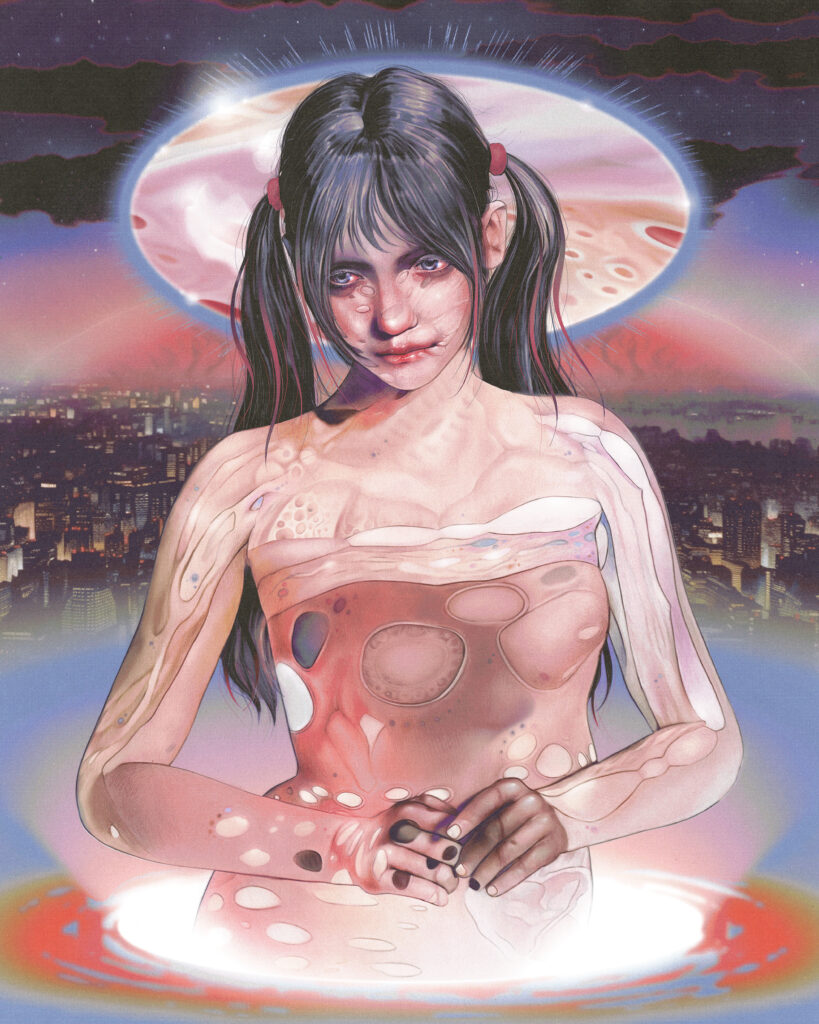
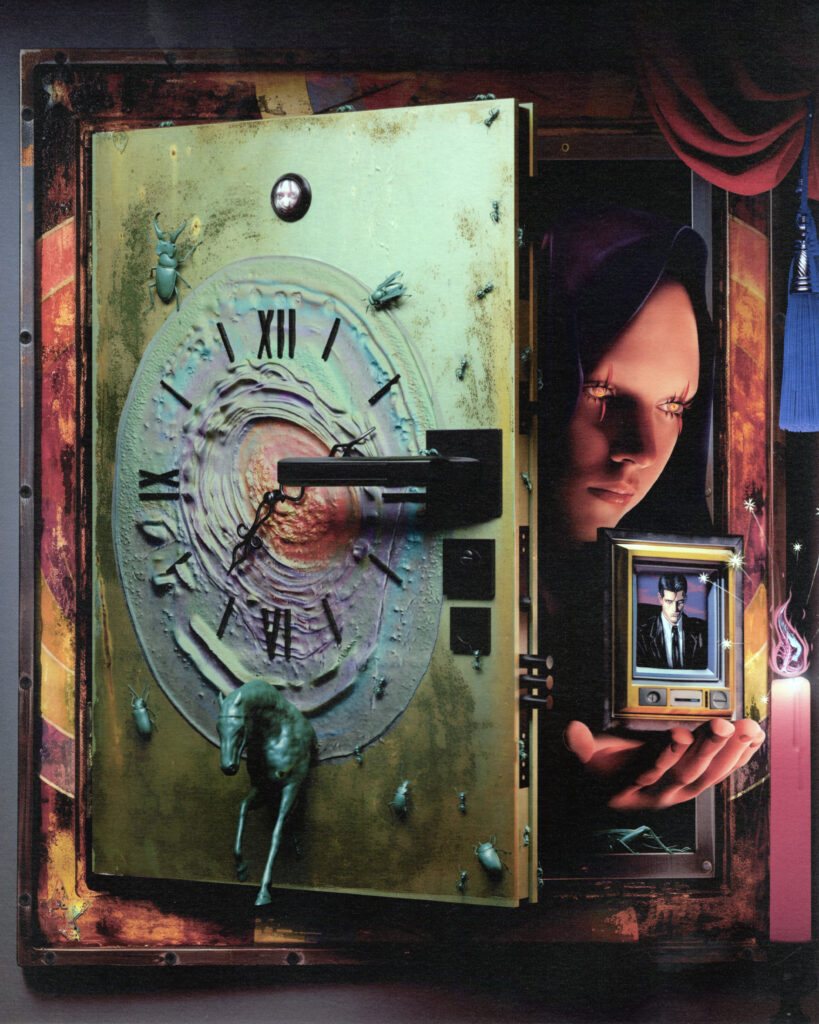
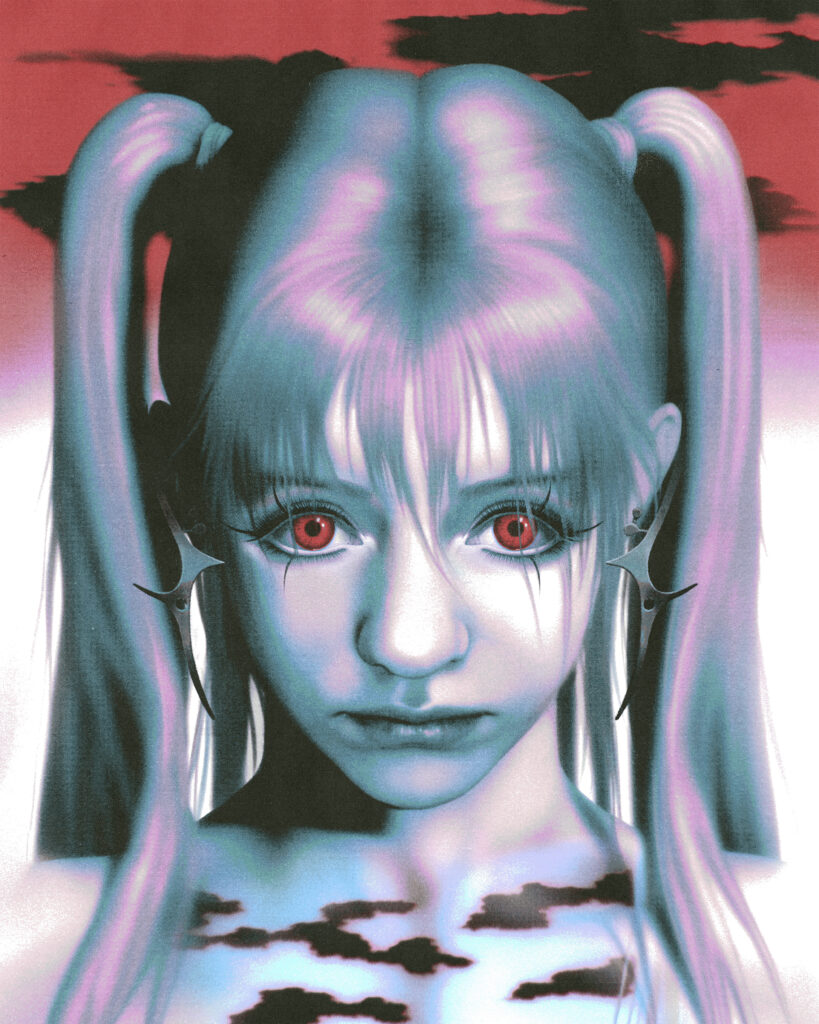
VR: Your artistic output is very versatile: you have applied it to music, fashion and art. What is your favourite field?
SR: Throughout my career, I’ve navigated through both preferable and less-than-ideal experiences, finding the music industry to be particularly nuanced in terms of adhering to timelines and managing artists’ image rights. I think that work teams are the pivotal factor in these experiences more than the “field” you are working within.
Currently, I’m collaborating with a studio of highly skilled art directors who grant considerable creative freedom. Although our work spans various sectors, the collaboration remains consistently exciting, and I would say I could work with them in almost any area.
At the moment, I miss having a personal work stream that isn’t about commissions. In the near future, I plan to shift more of my freelance energy towards my own projects, like a visual novel I’ve been thinking about for a few years, and ongoing animation experiments in my spare time. That’s my plan for the next few years.
